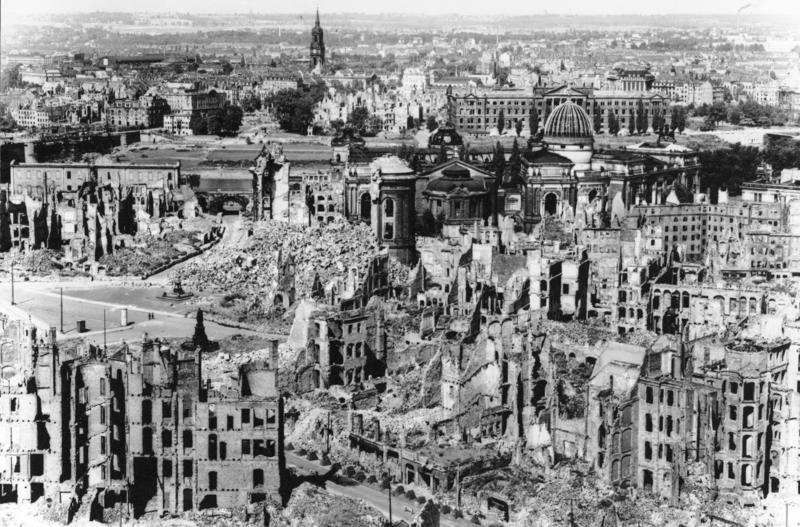Today in history, on February 13, 1945, Allied forces began the first of four bombing raids on Dresden, Germany. Bombs were dropped through the 14th and 15th and again on March 2nd as part of Operation Thunderclap. While other cities in eastern Germany were included in the raids, Dresden became one of the most controversial actions of the Allied forces in WWII.
By February 1945, the Soviet Red Army had made an aggressive push into Germany and was marching west. The Western Allies quickly strategized how to assist in the defeat of Nazi Germany. They developed Operation Thunderclap, a coordinated air campaign aimed at disrupting communications, crippling supply lines, and demoralizing the German population. The operation involved multiple bombing raids on key German cities, with Dresden being one of the primary targets.
Nearly 800 bombers dropped over 2,500 tons of high-explosive and incendiary bombs on Dresden on February 13, 1945, causing a level of destruction that was unprecedented. It ignited a vicious firestorm that raged for days. Bombings continued on the 14th, 15th, and March 2nd, focusing on railways and factories.
Though numbers vary, the civilian casualties were likely around 25,000. Dresden, known for its Baroque architecture and art treasures, was primarily a historical and cultural center, leading many to question the bombing. At the time, it was also packed with refugees fleeing the advancing Soviet army, further complicating the moral implications of the attack.
The debate about the attack on Dresden, whether it was a justified, successful military action, a distasteful but necessary tactic, or a war crime, continues to this day. The US completed a report in 1953 (declassified in 1978) confirming that the bombing was justified. Dresden began reconstruction shortly after the attacks and built historically accurate replicas of their famous sites over the years.

